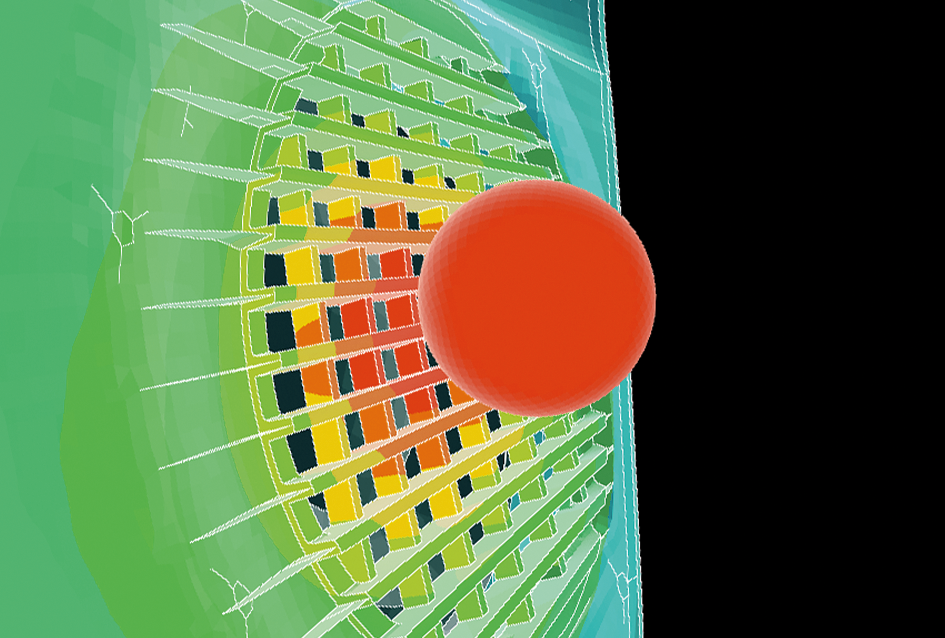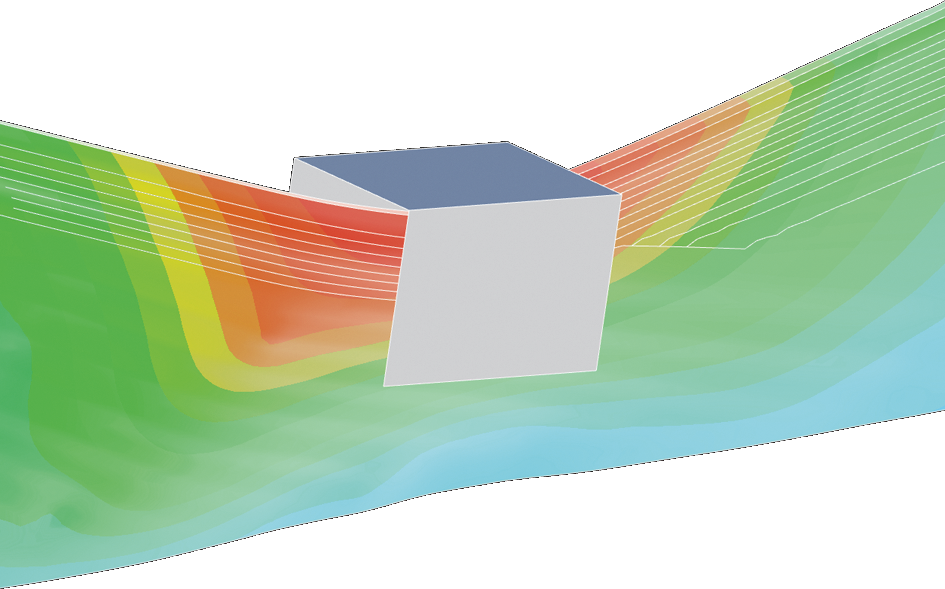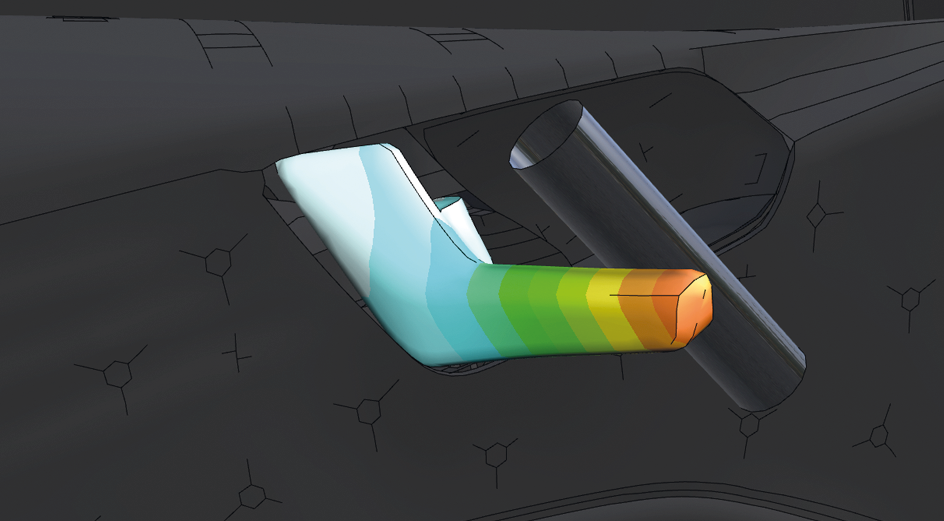Add-on stiffness
Timeline
2016- 2023Sector
AutomotiveScope
Moving parts calculation applied to the automotive industry.BACKGROUND
The moving parts (MPs) of a vehicle perform several functions, some of which are to allow entering and exiting a vehicle, an aesthetic design function, as a barrier against extreme weather (wind or rain) or protect the integrity of the passengers during a collision.
Modern doors are equipped with a large number of components, glass, rear view mirrors, audio systems, turn signals, interior panels, passive safety sensors or the structure of the MPs, which are of vital importance for the vehicle, the driving experience and the protection of its passengers. For this reason, their design and development are especially important when it comes time to build a car.
The analysis methodology requires an advanced level simulation and a high degree of detail in order to offer valid results. SOLUTE carries out these studies to ensure the structural life of the components of moving parts and integrate them with the rest of the disciplines involving in developing a car.
The automotive industry is increasingly becoming stricter each year in terms of the safety objectives and emissions; two areas that normally do not go hand in hand. For example, if we want to improve the performance of a door in terms of the static and dynamic loads, such as improving the stiffness of the frame or perfecting its behaviour against a crash, the first thing that usually comes to mind is to increase the thickness of their metal structural components. This could be a valid solution if the increase in weight did not result in an increase in fuel consumption and therefore, in increased emissions. Therefore, an in-depth analysis of the structures of the moving parts of cars and the optimisation of its design to improve performance while adding as little weight as possible are essential for any car manufacturer.
RESULTS
The structural design and development using CAE tools allows identifying failures and propose solutions in a manner that is much more dynamic and proactive, always with the aim of meeting the requirements established by the customer. The calculation models that are created and the proposed solutions must match reality as much as possible in order to minimise any possible changes during the prototyping or reproduction phase.
EXPERIENCE
Since 2016, SOLUTE has been supporting companies of the automotive sector in the design, calculation and testing of the moving parts of cars, always in collaboration and in an interdisciplinary manner with the different teams involved in developing these components. In these developments we usually apply the methodology and requirements demanded by customers, providing our experience and the criteria of our engineers.
Calculations for the development of moving elements are usually of the implicit and static type, with the three types of nonlinearities: large deformation, contact and material properties.
METHODOLOGY
The designing of moving parts in cars is carried out using CAE (computer aided engineering) software, which are typically based on the Finite Elements Method (FEM). These programmes are usually commercial off the shelf (ANSA, NASTRAN, PAMCRASH, META, and ABAQUS).
The calculations for designing moving parts are usually the implicit and static types, with the three non-linearity types: large deformations, contact and material properties. Modal and vibration calculations are also carried out and if necessary, an explicit calculation to cover specific load conditions where the dynamic is important.
The complexity and detail of the created models are in accordance with the state of development of the vehicle and the load case under study. This is how we can get models of just the component or of the component plus part of the vehicle's body.
Finally, all the results obtained in the different models must be correlated with those measured during the laboratory tests. In the event the model differs too much from reality, the model must be improved to match reality as much as possible.
Wind
Tools for handling and transport in the wind sector
Engineering of elements and assemblies to guarantee a proper installation and transport in the many demanding scenarios that occur in the wind sector
Automotive
NVH
Noise, Vibration and Harshness (NVH) is the study and optimisation of the noise and vibrations of a vehicle to improve its performance and comfort.


